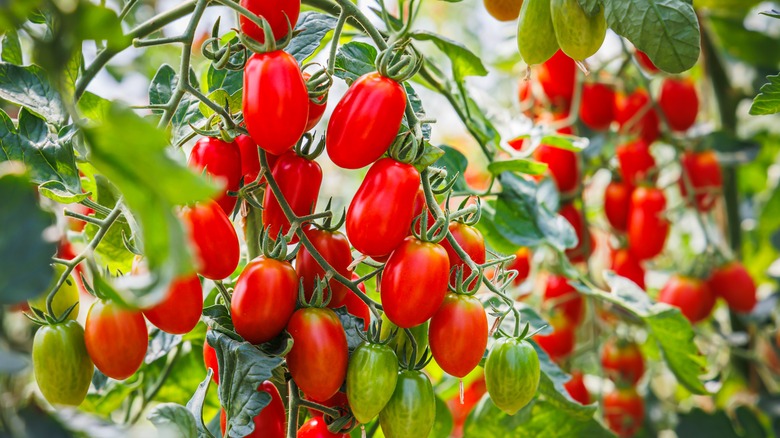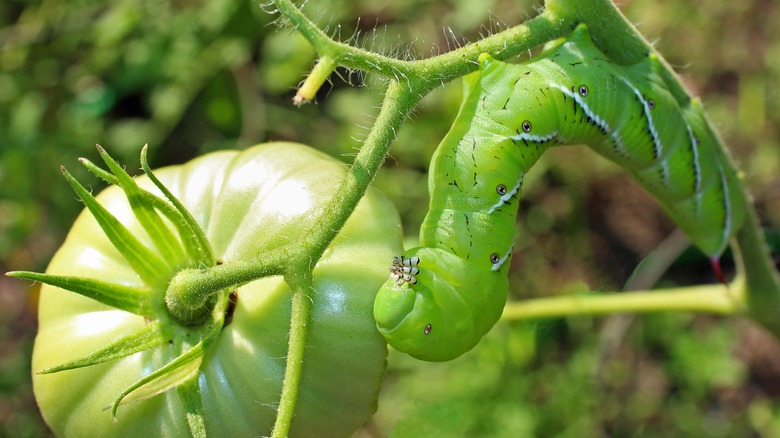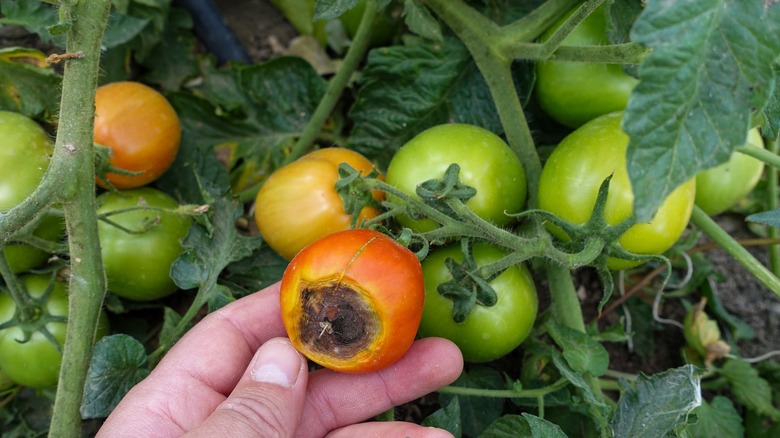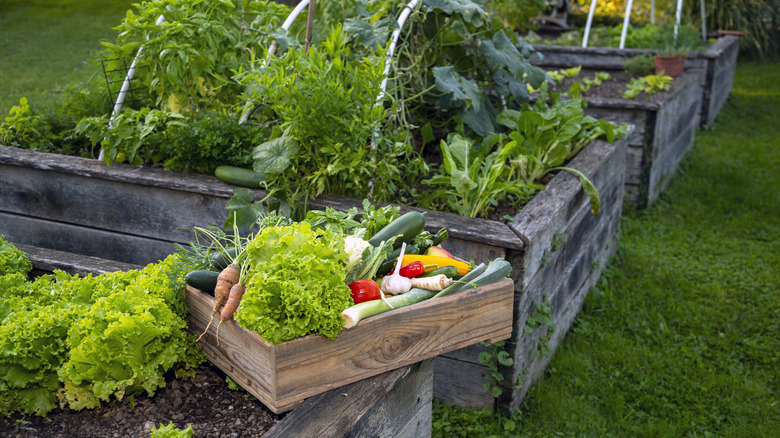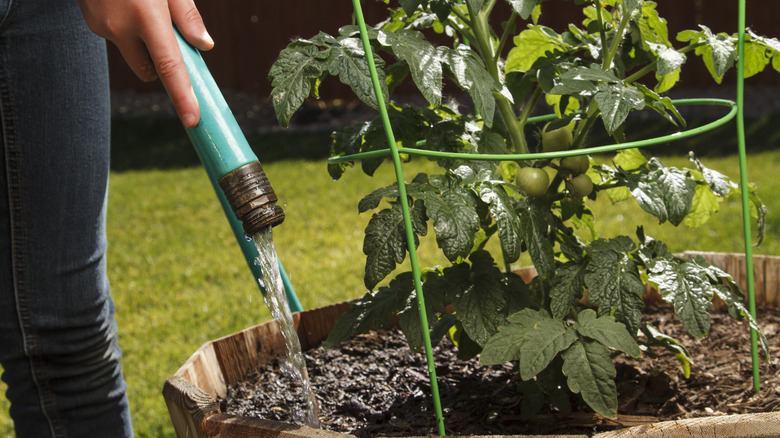Our Master Gardener Reveals The Tomato Growing Tip For A More Consistent, Plentiful Harvest
Tomatoes are generally considered a low-maintenance staple in most home gardens. Even some of the tiniest gardens often have at least one or two tomato plants, because unlike squash and many other vegetables, the taste of store-bought just doesn't compete with homegrown. Even my grandfather, who couldn't eat tomatoes, grew them, because "that's just what you do." No one in the family complained, since we enjoyed the endless source of tomatoes. And one thing he always did to grow the best tomatoes was practice crop rotation — his plants were never in the same place two years in a row.
Some years I have a large garden, and others I just throw a few plants in containers. No matter the situation, there are always tomatoes. Not only is the overall taste of homegrown superior, but I get to choose unique varieties. My favorites are Cherokee purple slicing tomatoes and Sweet 100 for quick snacking, but I also like the excitement of trying something new like white tomatoes, those with stripes, and extra early varieties when I'm in a hurry for my harvest. Whatever tomato variety I grow, they are in a different spot each year to help prevent some of the most common problems, including pest and fungal issues, which can reduce or eliminate my harvest.
Crop rotation for tomato disease and pests
Simply put, crop rotation is the process of planting members of plant families in a different spot each year. Unless you have an exceptional memory, keeping simple records of what you plant in each section of your garden in a notebook can help you know how to plan your garden next season. Tomatoes may be pretty low maintenance, but just like every plant, they are susceptible to specific pests, blight, and even viruses.
Placing your tomato plants in the same spot every year gives common pests a consistent place to thrive. While there are plenty of pests that will affect your entire garden — like flea beetles, whiteflies, and aphids — the biggest threat to tomatoes are hornworms, which you can see pictured above. These large caterpillars can ravage a plant overnight, leaving you with little more than a skeleton of your beloved tomatoes. Likewise, fungal spores that lead to blight remain in the soil, as do viruses for as long as they have a host. If you are constantly battling blight or any of these issues, consider moving your tomatoes to a new spot next year.
Moving tomatoes to balance nutrients
Garden plants have different nutritional needs. Some can grow in pretty lean soils. Many greens, like lettuce and kale, can thrive without much fertilizer — although you will get a bigger harvest if you provide extra nutrients. Others consume more of certain types of fertilizer. For example, root crops will perform better in soils rich in phosphorus. Fruit-producing plants like peppers, squash, and tomatoes are considered "heavy feeders," because they deplete the soil more quickly than other plants and require regular fertilization.
Planting these heavy feeders in the same place every year can make it difficult to keep the right balance of nutrients in the soil. Rotating them out each year with less-demanding plants gives that garden spot time to recover and store up nutrients, like the calcium needed to prevent blossom end rot. It really helps to cycle heavy feeders with nitrogen-fixing plants, like green beans or other legumes, to help add this important macronutrient to the soil naturally, ensuring you won't have to deal with stunted plants that can't produce fruits due to lack of nutrients.
How often should you rotate your plants
Crop rotation is not just about moving one specific type of plant to a different space; in fact, it's best to move all members of the same plant families. For example, even though peppers and tomatoes are not affected by the exact same pests and diseases, tomato hornworms will happily feast on pepper plants. Peppers, tomatoes, potatoes, and eggplants are all part of the nightshade family, which are host plants for these voracious eaters. Planting peppers in the same spot you had a hornworm infestation on tomatoes last year will likely lead to a similar outcome this year.
To give pests, fungal spores, and viruses time to die off, don't place plants in the same family in the same area more frequently than every three years. If you have had extensive problems with stubborn pests or fungal issues like hornworms or blight, waiting four years is even better if you have the space.
Practicing crop rotation in the home garden
It's easy to put your tomatoes far away from last year's spot if you have a large farm, but it can be more challenging in a home garden with limited space. Bonnie Plants suggests the simplest way to rotate your crops is to divide them into four categories: fruit-producing, leafy greens, roots, and legumes. If you have four raised garden beds or just four corners of a tilled in-ground garden, move the plants in each category to the left next year.
If your garden is smaller, you may have to get more creative. Consider moving one category to containers if you have room. Perhaps that means you grow container varieties the year after dealing with severe blight on your tomatoes. Another option is to only grow a few of the listed categories and buy the others at the farmer's market this year. Regardless of how you manage to work crop rotation in your garden plan, you will be able to use less fertilizer while dealing with fewer disease and pest problems.
